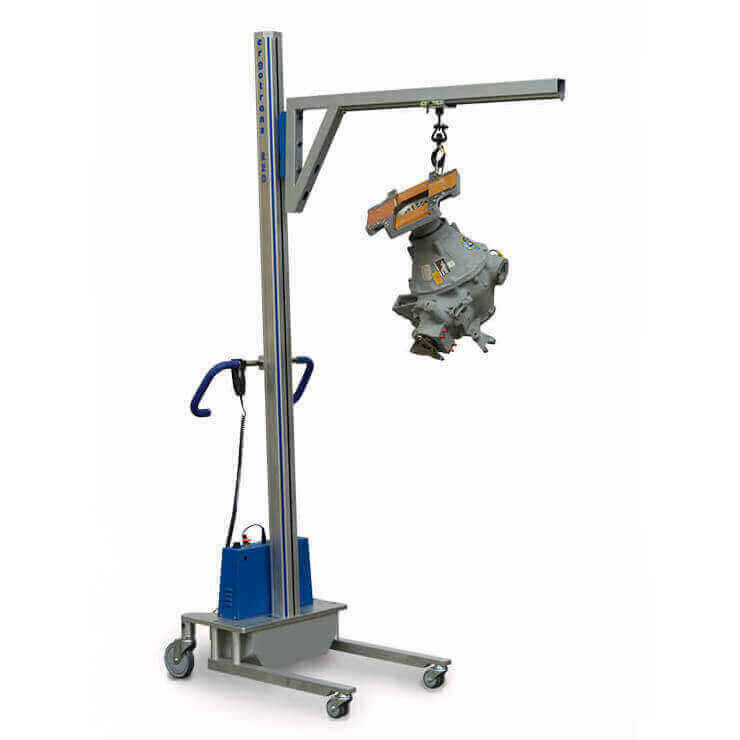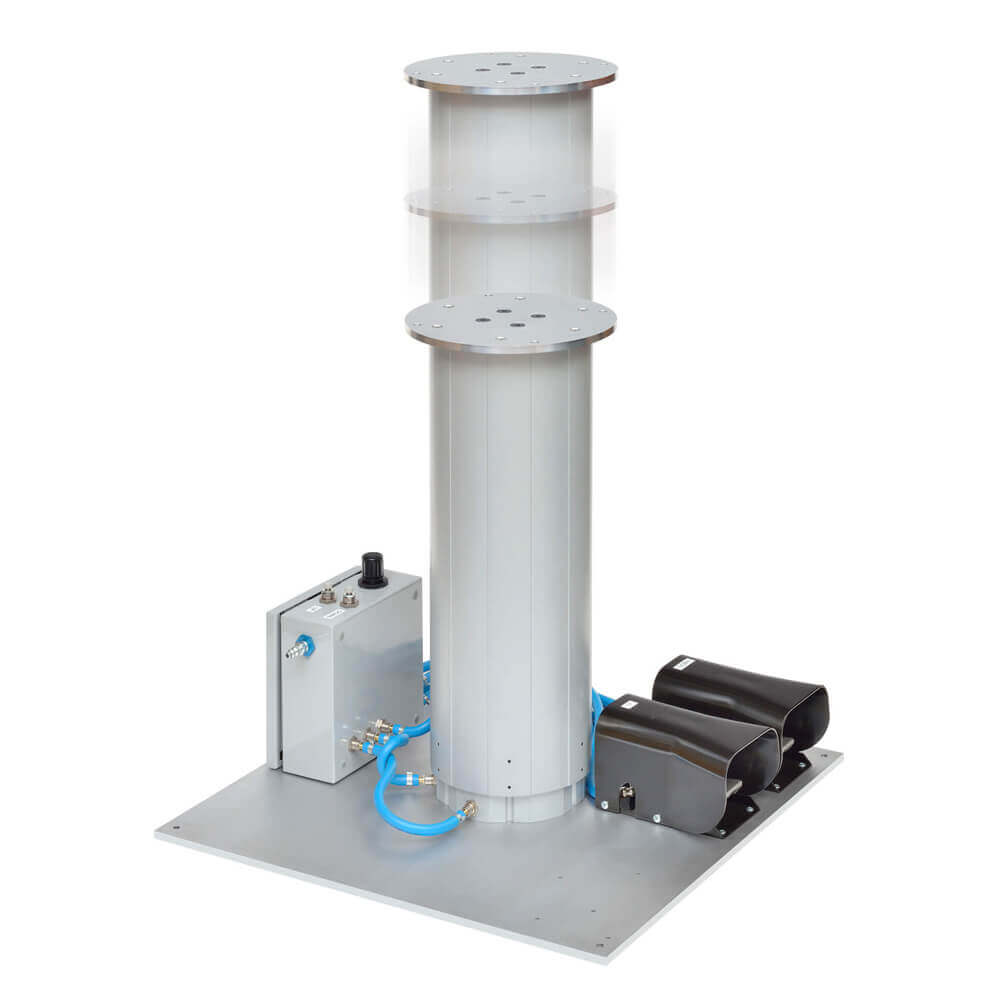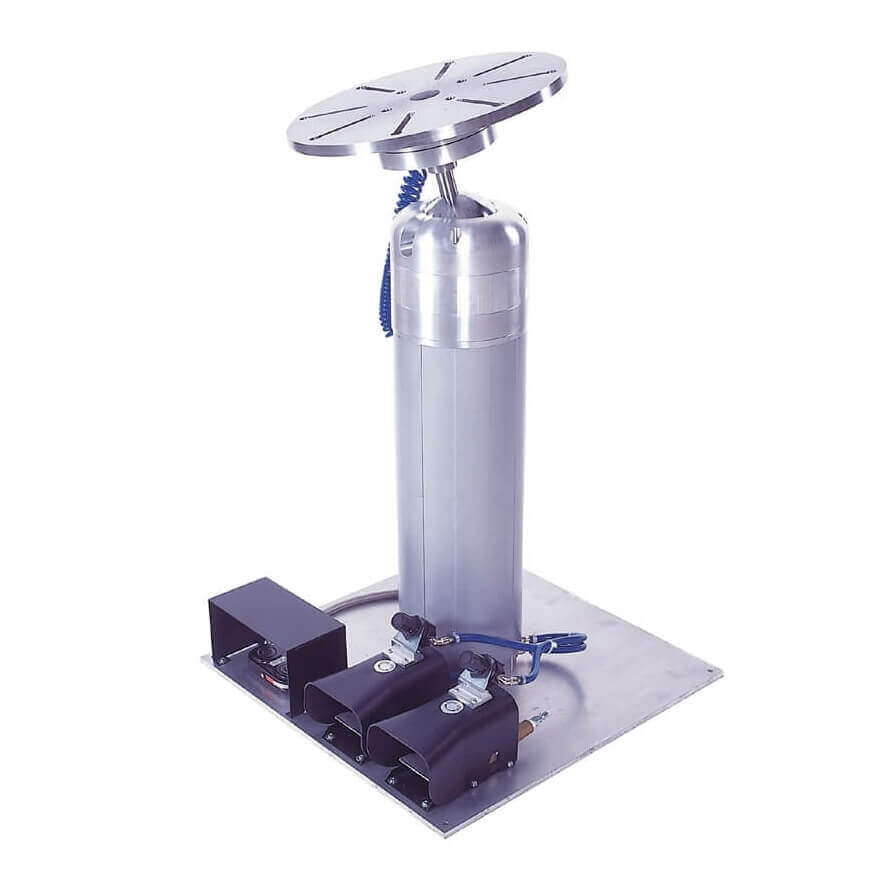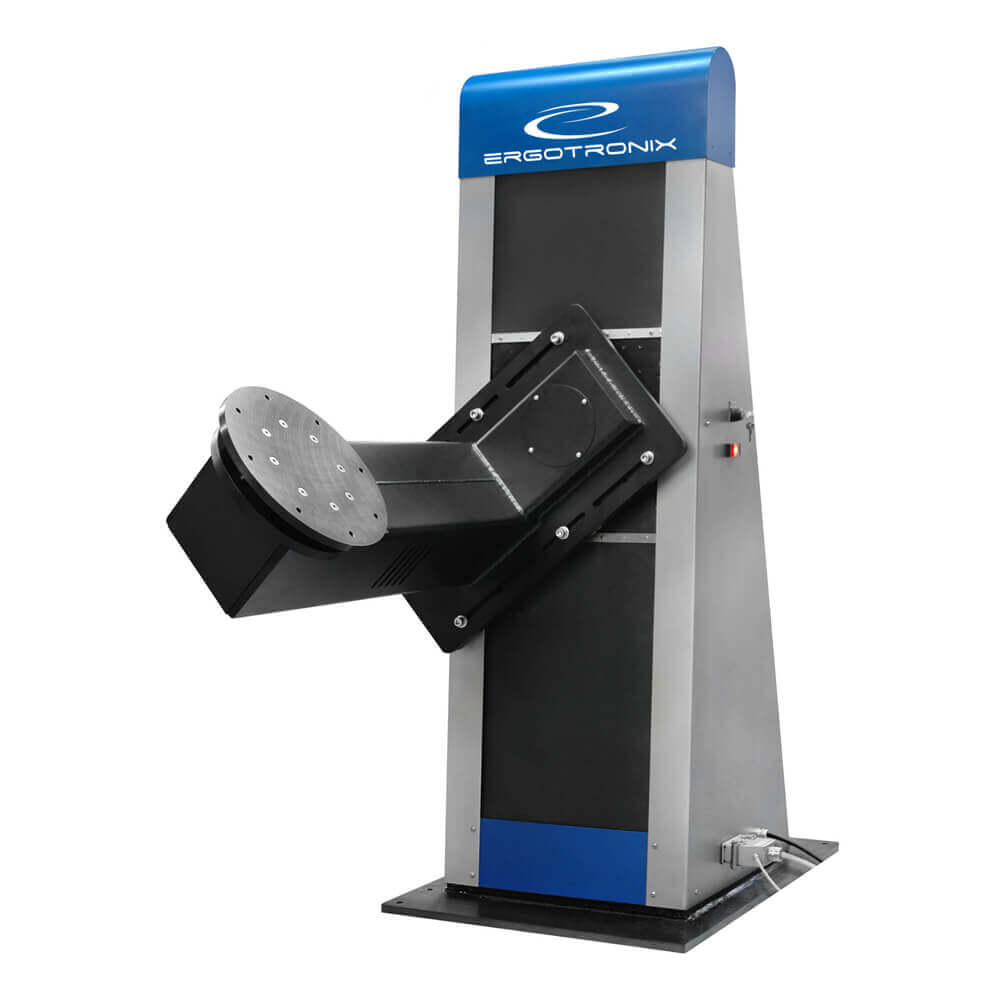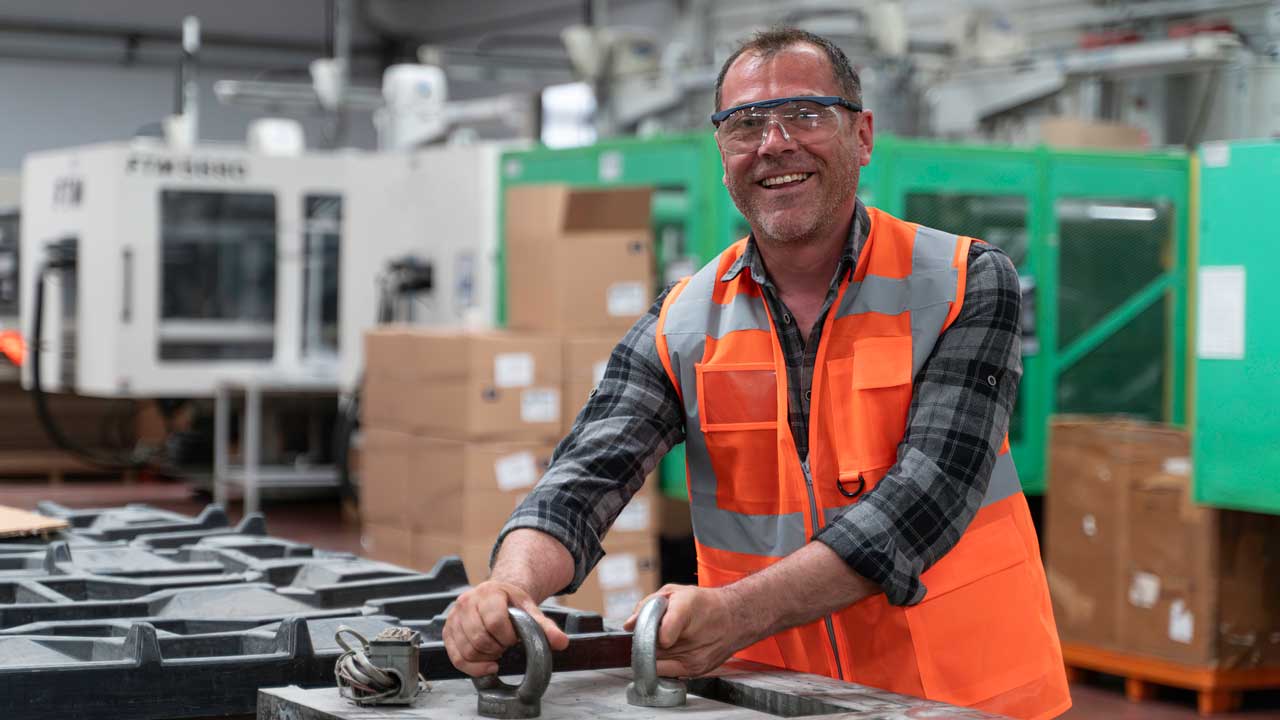Essential Tools to Lift Heavy Objects Without Risking Worker Injuries
Key Takeaways
- Manual lifting creates hidden costs beyond immediate injuries. Workers’ compensation claims, increased insurance premiums, turnover, and lost productivity add up. Facilities that use proper lifting equipment see lower absenteeism and turnover rates.
- Three core lifting technologies address different operational needs. Pneumatic systems offer fail-safe reliability for continuous operation. Electric lifts provide precise positioning for variable-height applications. Multi-axis equipment positions the work to the operator, eliminating awkward postures.
- Safety features directly impact your bottom line. Overload protection, emergency stops, and fail-safe mechanisms reduce equipment damage and workers’ comp claims. Load monitoring displays prevent operator errors before they become incidents.
- ROI comes from multiple channels simultaneously. Beyond injury cost reduction, proper lifting equipment delivers faster material handling, improved product quality, and lower maintenance costs compared to makeshift solutions.
- Implementation typically shows measurable returns within the first year through reduced compensation claims and increased productivity.
When searching for the right tools to lift heavy objects, manufacturers face a critical decision that impacts both worker safety and operational efficiency. At Ergotronix, we’ve spent decades developing innovative solutions that eliminate the physical strain and injury risks associated with manual heavy lifting. Our comprehensive approach to material handling combines cutting-edge technology with ergonomic design principles, ensuring that workers can safely manage loads ranging from a few pounds to several thousand pounds without compromising their health or productivity.
We understand that every manufacturing operation has unique challenges, from space constraints to load specifications, which is why our ergonomic manufacturing solutions are designed to adapt to your specific requirements while maintaining the highest safety standards.
Understanding the Hidden Costs of Manual Heavy Lifting
Manual lifting operations create substantial hidden costs that extend far beyond the immediate physical demands placed on workers. According to the Bureau of Labor Statistics, workplace injuries related to lifting and material handling account for a substantial number of workplace injuries, resulting in billions of dollars in workers’ compensation claims, lost productivity, and increased insurance premiums.
The biomechanical stress placed on workers during manual lifting creates cumulative damage that often doesn’t manifest until years later. We’ve observed that facilities using appropriate tools to lift heavy objects experience significantly lower turnover rates, reduced absenteeism, and improved worker morale. Our lift and transport systems eliminate these bottlenecks by enabling workers to move materials quickly and safely without physical strain.
Essential Lifting Technologies for Modern Manufacturing
Pneumatic Lift Systems
Pneumatic lift technology represents one of the most versatile solutions for handling heavy objects in manufacturing environments. These systems utilize compressed air to deliver smooth, controlled lifting motions that can be precisely adjusted to meet the specific requirements of your application. The inherent safety features of pneumatic systems, including fail-safe mechanisms and overload protection, make them ideal for operations where worker safety is paramount.
Our pneumatic solutions integrate seamlessly with existing production workflows, providing the reliability required for continuous operation. The smooth operation of pneumatic systems reduces shock loading on both the equipment and the materials being handled, extending the life of your components and reducing maintenance requirements.
Electric Telescopic Solutions
Electric telescopic lifting equipment provides precise control and exceptional versatility for operations that require precise positioning accuracy. These systems excel in applications where variable height adjustments are needed throughout the production process. The programmable nature of electric systems allows for consistent, repeatable motions that enhance quality control while reducing operator fatigue.
The energy efficiency of modern electric telescopic systems provides long-term cost savings while delivering the power needed to handle substantial loads. These systems can be integrated with existing control systems, allowing for automated operation that further reduces the physical demands on workers.
Multi-Axis Positioning Equipment
Advanced work positioning technology enables workers to manipulate heavy objects with precision and ease. Multi-axis systems offer rotation, tilt, and height adjustment capabilities, positioning the work to the optimal location for the operator, rather than requiring the worker to adapt to awkward positions.
The ergonomic benefits of multi-axis positioning extend beyond simple lifting, encompassing the entire range of motions required for complex assembly and manufacturing tasks. Our Ergo Master work positioner exemplifies this technology, offering 360-degree rotation and variable height adjustment that accommodates both standing and seated operations.
Safety Features That Make a Difference
Modern lifting equipment incorporates multiple safety features designed to protect workers and equipment:
- Overload protection systems that prevent equipment damage and ensure operator safety by automatically stopping operation when loads exceed safe limits
- Emergency stop functionality provides immediate shutdown capability from multiple operator positions
- Load monitoring displays that provide real-time feedback on weight distribution and system status
- Fail-safe mechanisms ensuring controlled lowering of loads even during power failures
- Ergonomic control interfaces are designed to minimize operator fatigue and reduce the risk of control errors
- Integrated safety barriers that prevent accidental contact with moving components
- Redundant safety systems provide multiple layers of protection for critical operations
Implementation Steps for Heavy Lifting Solutions
Successful integration of professional tools to lift heavy objects requires careful planning and systematic implementation:
- Conduct a comprehensive workplace assessment to identify all lifting tasks, load requirements, and environmental constraints that will influence equipment selection
- Analyze current injury data and workers’ compensation claims to establish baseline metrics for measuring improvement
- Engage workers in the selection process to ensure equipment meets practical operational needs and gains user acceptance
- Develop a detailed implementation timeline, coordinating equipment installation with production schedules to minimize disruption
- Establish training protocol,s ensuring all operators understand proper equipment use and safety procedures
- Create maintenance schedules to preserve equipment reliability and extend operational life
- Implement performance monitoring systems to track safety improvements and productivity gains
- Plan for continuous improvement through regular review and optimization of lifting operations
Choosing the Right Tools to Lift Heavy Objects for Your Operation
Selecting appropriate lifting equipment requires careful consideration of multiple factors specific to your manufacturing environment. Load capacity represents just one element of the decision-making process; equally important considerations include duty cycle, environmental conditions, space constraints, and integration requirements with existing systems.
Our comprehensive ergonomic solutions approach ensures that equipment selection aligns with both immediate needs and long-term operational goals. We evaluate factors such as ceiling height, floor loading capacity, power availability, and maintenance access to recommend solutions that will perform reliably in your specific environment.
The versatility of modern lifting systems allows for customization that addresses unique operational requirements. Whether you need specialized attachments for specific load types or integration with existing conveyor systems, contemporary tools to lift heavy objects can be configured to meet diverse manufacturing needs.
ROI Benefits of Professional Lifting Equipment
Investment in professional lifting equipment delivers measurable returns through multiple channels:
- Reduced workers’ compensation costs through the elimination of lifting-related injuries and associated medical expenses
- Decreased employee turnover resulting from improved working conditions and reduced physical stress
- Increased productivity through faster material handling and reduced fatigue-related slowdowns
- Enhanced product quality from improved positioning accuracy and reduced handling damage
- Lower maintenance costs compared to makeshift lifting solutions that require frequent repair
- Improved regulatory compliance by meeting OSHA standards and reducing potential fines
- Extended equipment life through proper handling that reduces shock loading and mechanical stress
The implementation of proper workplace ergonomic design creates a positive feedback loop where improved working conditions lead to higher worker satisfaction, reduced turnover, and enhanced operational stability.
Our Process: How Our Experts Can Help You
Ready to transform your material handling operations with professional tools to lift heavy objects? Our process ensures you get the right solution for your specific needs:
- Schedule a comprehensive facility assessment where our ergonomic specialists evaluate your current lifting operations and identify improvement opportunities
- Receive customized equipment recommendations based on your specific load requirements, space constraints, and operational goals
- Review detailed ROI projections showing expected savings in injury costs, productivity improvements, and long-term operational benefits
- Participate in equipment demonstrations to see firsthand how our solutions will improve your operations
- Develop an implementation timeline coordinating installation and training to minimize production disruption
- Access ongoing support services, including maintenance programs and performance optimization consultations
We understand that every manufacturing operation faces unique challenges, which is why our team of ergonomic specialists works closely with you to develop solutions that address your specific requirements. Our commitment to worker safety and operational excellence has made us the trusted partner for Fortune 500 companies seeking to improve their material handling operations.
Contact Us Today for Your Heavy Lifting Solution
Don’t let outdated lifting methods continue to put your workers at risk and limit your operational efficiency. Discover how our portable lifting devices’ benefits can transform your manufacturing operations while protecting your most valuable asset: your workers. Contact Ergotronix today to begin your journey toward safer, more efficient material handling operations that support both worker wellbeing and business success.

